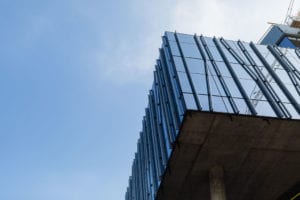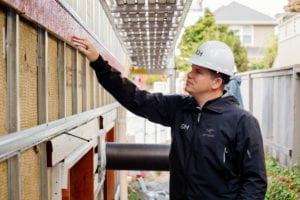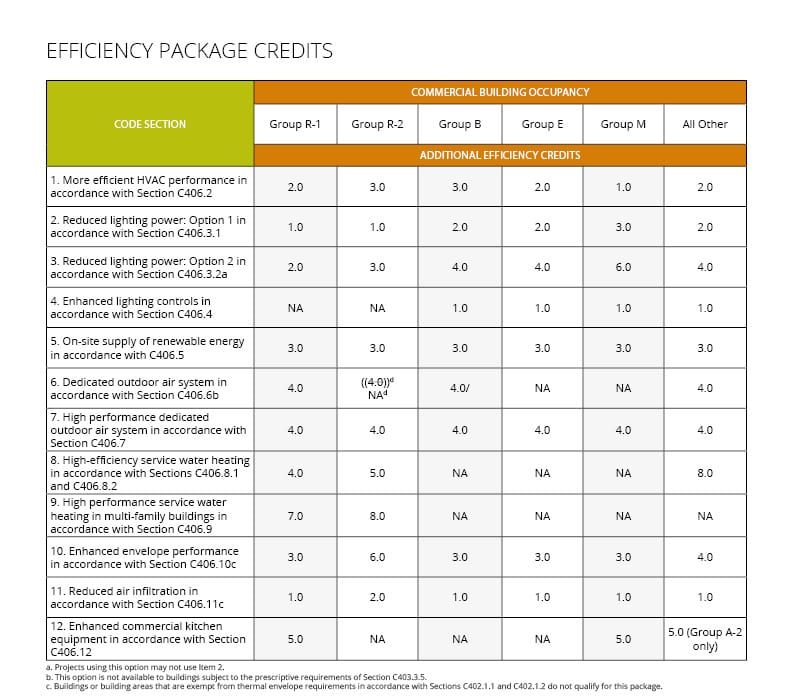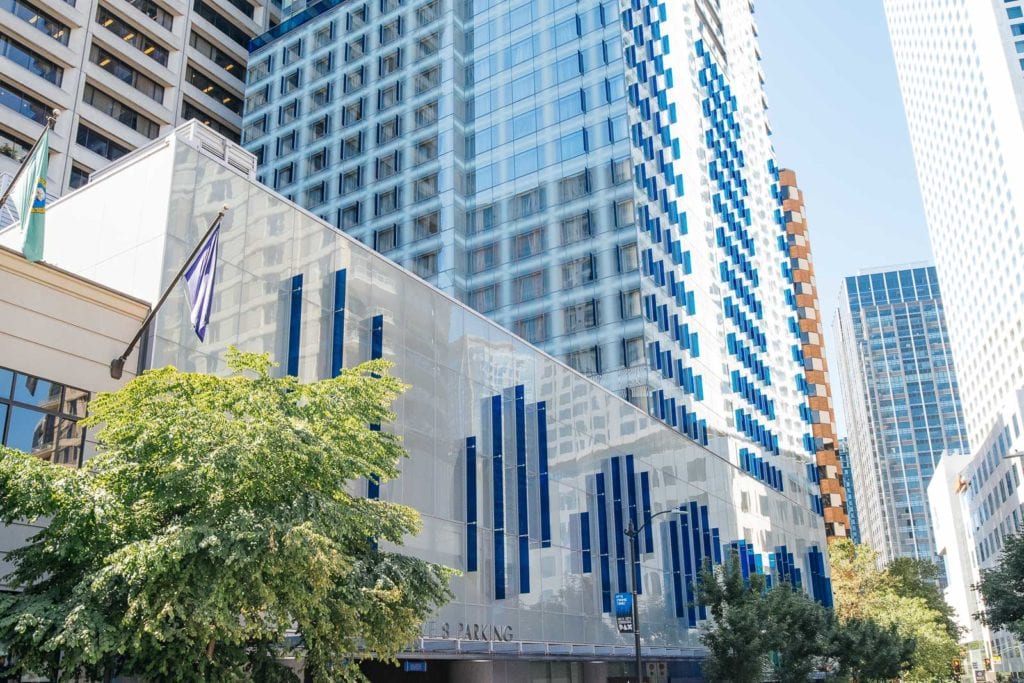As many in the industry are aware, an amended version of the Washington State Energy Code (WSEC) was introduced in 2018. The 2018 WSEC will go into effect on November 1, 2020 and will have a significant effect on the building industry.
To help you navigate the upcoming changes, our Energy & Sustainability team developed a list of some important changes to the 2018 WSEC. This blog post will be updated as more information is made available, so be sure to check back here. The various changes our team explores in this blog post include:
- Introduction of a New Compliance Path
- Changes to Total Building Performance
- New and Updated Definitions
- Air-leakage Testing
- Understanding the Extra Efficiency Credits
This blog post refers to changes to the Commercial portion of the WSEC, which covers most buildings other than residential-unit-only buildings that are three stories and less. If you have any questions about these changes and would like to learn how they will affect your project, please reach out to us at sea@rdh.com or call 206-324-2272.
Introduction of a New Compliance Path
The 2018 WSEC introduces a new outcome-based energy budget compliance path in addition to the prescriptive compliance and the total building performance paths. The outcome-based energy budget was adopted from the 2015 Seattle Energy Code and sets a maximum Energy Use Intensity (EUI) budget for each building occupancy/ use Project teams must develop a single whole-building energy model for the proposed building to comply with this new standard. This path limits the building enclosure’s total heat loss coefficient (UA) to be no more than 20% higher than the level stated in the prescriptive code. To ensure compliance is maintained, the building owner or the owner’s representative must submit one year of the building’s actual energy use within the first three years of occupancy, and every five years after the first submission. Penalties will be imposed if the building’s actual EUI exceeds the code-required EUI budget. It is important to note that the outcome-based energy budget compliance path is not applicable unless it has been adopted by your local jurisdiction.
While the outcome-based path presents a new option for project teams to explore, teams are still able to follow the existing compliance paths. Those two paths entail the following:
- The prescriptive compliance path can be met by either achieving the specified R-value for each assembly or utilizing the envelope component trade-off method.
- The total building performance path requires developing two whole-building energy models—a baseline building and the proposed building—to demonstrate that the energy performance of the proposed design exceeds the baseline building.
Changes to the Total Building Performance Path
As noted above, the total building performance path requires developing both a baseline and a proposed whole-building energy model to show that the completed building will exceed the baseline’s energy performance.
- This path now limits the building enclosure’s total UA to be no more than 20% higher than the level stated in the prescriptive code.
- The energy modeling requirements are now based on ASHRAE Standard 90.1 Appendix G rather than the International Energy Conservation Code (IECC).
- The primary performance metric is now carbon emissions rather than energy consumption.
- Section C406 extra efficiency credits are no longer required for this path.
New and Updated Definitions
The 2018 WSEC includes several definition updates that relate to the code changes. The highlighted definitions listed below are important in understanding the new updates.
- Continuous insulation: Only metal thermal bridges are stipulated in this definition. Insulation is considered continuous only if metal thermal bridges have a cross-sectional area < 0.04% of the enclosure surface area; otherwise, the insulation does not meet this definition and metal thermal bridges must be accounted for.
- Visible transmittance (VT): Visible transmittance for skylights must now be measured and rated according to the National Fenestration Rating Council (NFRC) section 202, while tubular daylighting devices must adhere with NRFC section 203.
- Mass transfer deck slab edge: Cantilevered balconies are now excluded from the definition of a mass transfer deck slab edge. This means that cantilevered concrete balconies must meet the insulation requirement for mass walls. The diagram below depicts a mass transfer slab edge at a typical deck condition or the transition from an above-grade structure to a below-grade structure.
Air-leakage Testing
In 2009, Washington State introduced mandatory air-leakage testing for all new buildings and has continued to incrementally increase targets. The 2018 WSEC requires project teams to aim for a more stringent target in terms of air leakage. Project teams will need to achieve an air-leakage rating of 0.25 cfm/ft² at 0.3 inches water gauge or below in order to meet the 2018 WSEC.
If the test result is greater than 0.25 cfm/ft² and less than 0.40 cfm/ft², the project team is required to conduct visual inspections, seal the leaks, and document corrective actions.
If the test result exceeds 0.40 cfm/ft², the project team will be required to make the necessary remediations and conduct the test again. Further remedial work and retesting will be required until a leakage rate of 0.40 cfm/ft² or less is achieved. A test above 0.40 cfm/ft² will not be accepted.
While the change should not affect the design and construction of new buildings, it does reduce the margin for error and increases the consequences of not meeting the required air-leakage ratings. Project teams will need to focus on well thought-out air barrier detailing as well as quality assurance and quality control programs during construction. The added attention to all aspects of the air barrier design and construction are necessary to avoid the potentially high consequences of not meeting the desired air-leakage rating.
Understanding the Extra Efficiency Credits
The extra efficiency credits were introduced in the 2015 WSEC for project teams pursuing the prescriptive compliance path. The 2018 WSEC now requires project teams to achieve a minimum of six credits—a four-credit increase from the 2015 code. The 2018 WSEC provides a series of options that ultimately contribute to the energy efficiency of the finished building. Each option is weighted differently depending on the building occupancy type. As shown in Efficiency Package Credits table below, some options allow project teams to earn more credits than others. For example, by achieving enhanced envelope performance per Section C406.10c on a Group R-2 building, project teams will earn all six credits needed. Teams that implement a high-performance, dedicated outdoor air system (DOAS) per Section C406.7 on the same building type will earn just four credits, requiring the team to seek more credits using another option.
Efficiency Package Credits table has been adapted by RDH from the WSEC 2018 edition.
Future Changes and How to Learn More
As the code continues to evolve including possible amendments and our knowledge of these changes expands, we will update this post for your reference. If you would like to receive a notification when this post is updated, please fill in the form below.
The first printing of the WSEC – Commercial 2018 Edition can be viewed here.
Our Energy & Sustainability team has the unique ability to provide an integrated approach to enclosure and energy-efficient design, allowing for the development of optimized solutions that provide cost-effective means of achieving the design intent and energy performance goals. RDH has extensive expertise in whole-building energy modeling and completing prescriptive energy code compliance calculations for many building types, from small and large residential buildings to commercial offices, institutional buildings, and government buildings. Our team is currently undergoing the design of several buildings that are in compliance with the 2018 WSEC . We invite you to reach out to one of our specialists about our current experience and how we can support you through the code transition.











